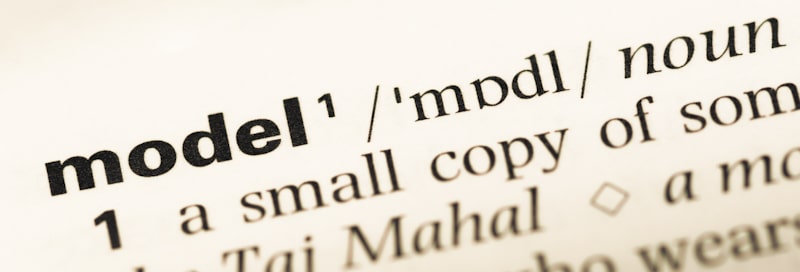Some words in the English language could have only one letter setting them apart. But that’s usually good enough to overhaul their meanings completely. For example, “desert” and “dessert”, have just a single alphabet differentiating them, yet they are two distinct terms. That, however, isn’t the case with “modelling” and “modeling”.
Both “modelling” and “modeling” mean “to model”, which in turn means to “fashion”, “replicate”, “build”, etc. The latter has one “L” less as it’s the U.S. variant of the word. The spelling with two “L’s” is standard in the U.K., Australia, and most other English-speaking nations that aren’t the U.S.
Now that it’s clear “modelling” and “modeling” carry the same meanings, read on to learn how and when to use the two terms in your texts, whether there are scenarios in which one of the two terms is preferred or deemed more acceptable than the other, and a host of other information.

“Modelling” – Definition
“Modelling” means to “display a certain thing” or “demonstrate appropriate behavior”. It can also mean to “make a model or demo item” or “act”.
Creating a mini, functioning car is “modelling”. Teachers or instructors typically employ such “modelling” techniques or approaches in classrooms and workshops.
The words related or synonymous to the “modelling” include “create”, “represent”, “design”, “parade”, etc.
“Modelling” and Various Fields
When the term is used in the arts field, it could refer to “the process of creating sculptures with clay”. In the graphics world, the word could mean “rendering illusions of volume or depth on a 2D surface via shading”. In math or operations, “modeling” denotes “the representation of a concept or process using a computer program”.
“Modeling” could also mean “imitation”. For instance, “modeling” is a therapy employed in specific cognitive-behavioral psychotherapy methods whereby the patient learns only through imitation, without any verbal instructions by the therapist.
Outside of the realm of psychology or “treatment”, “modeling” can also mean acquiring a new skill through observation or imitating another individual’s behaviors.
The bone, too, can “model” or change in shape and size during puberty through resorption and new bone formation at different rates and sites.
The History of the Term “Modelling”
The word “modelling” is rooted in the word “model”, which can be used either as a noun or a verb.
Like most English terms, the word is not original but derived from “modelle”, a Middle French term derived from “modello”, an Italian term. And this chain of inspiration doesn’t end there as “modello” could be traced back to “modus”, a Latin word that means “measure” or “manner”.
No doubt, the word “model” has undergone multiple alterations and refining over the course of time. Around the onset of the 17th century, the term “modelize” was the preferred verb variant of the word.
A few decades later or after around the 1750s, “model” replaced “modelize”. The meaning “to display or exhibit fashion designs or garments” got attached to the term “model” only during the early 20th century.
“Modeling” – Definition
“Modeling” means the same as “modelling”. It’s just that “modeling” is the U.S. English variant of the term.
“Modelling” was not always the de facto spelling for Americans. Before U.S. English became a thing, “modeling” was commonplace in the States as well. The transition to “modeling” happened only when the U.S. dialect was introduced and started to gain traction among the masses.
“Modeling” was, in fact, relevant in the American literature society until the beginning of the 20th century. Sometime around the latter half of the century, “modeling” started to pick up and wholly replaced “modelling” in U.S. publications and other texts.

Using the Word “Modelling” in Texts
Using the term “modelling” in your texts correctly should not be that difficult, especially if you know what the word stands for and the dialect it’s a part of. However, the term’s inflections or variations could assume a few other meanings, as mentioned above.
For example, the verb “modelled” denotes “creating something through inspiration from another or similar piece of work”. Miniature models of ships, airplanes, cars, etc. can be “modelled”, for instance. Keep these slight alterations in meanings in mind when using the word in your sentences.
Like its root word, “modelling” can be incorporated into sentences either as an adjective or a verb. When used as a verb, the term becomes the present participle of the word “model”, which, as mentioned before, could assume multiple meanings. People can, for instance, “model” the latest haircut or fashionable clothes.
For example:
- Tim is modelling the winter look for this season.
When used as an adjective, the term describes a thing that’s used for display or demonstration.
For example:
- John’s modelling career spanned a whopping three decades before retiring to live a life in the countryside.
- Her rapid ascension in the modelling industry can be attributed to her persistence and supreme self-confidence.
Using the Word “Modeling” in Texts
The rules that apply to using “modelling” in sentences apply to its U.S. variant “modeling” as well.
However, when it comes to using the term in a “financial” or more “industrial” context, the term with the single “l” could be preferred over the British variant. For example:
- The company uses a specific tool for financial modeling.
- She swallowed modeling glue.
Though these sentences would not be grammatically incorrect if “modeling” was replaced with “modelling”, it would read awkwardly. Some of the phrases that incorporate “modeling” have become de facto terms.
For example, even if you type “financial modelling” in search engines, the results will have titles and links with the altered “modeling” in them. “Financial modeling” has, in fact, kind of become an industry term.
Why is “Modeling” Spelled Like So?
In most English-speaking countries outside of the U.S., “modeling” is spelled as “modelling”. Staying true to its spelling conventions, the United States knocks off the additional “l” from the spelling, like it does with “traveler”, “trialed”, “traveling”, etc. Besides conforming to U.S. English rules, there’s no other reason why “modeling” is spelled like it is.
However, one can try answering why the U.S. dialect removes the additional “l” from “modelling” and other English words with two “l’s” in their spellings, such as “travelling”, “trialled”, etc. It all comes down to U.S. English not being in favor of adding an additional “l” when a suffix that starts with a vowel is added to a word that ends with another vowel.
In U.K. English, the extra “l” is added for this very reason or to establish or signify the merger of two vowels in the formation of a new word.
Example Sentences with the Term “Modelling/Modeling”
Since the two terms “modelling” and “modeling” mean the same thing, “modelling” could be used in the place of “modeling” in any of the following sentences:
- After having received multiple compliments for her height and looks, Mary thought it was perhaps the right time to contact a few modeling agencies in her region.
- To turn into a full-time homemaker after having excelled at modeling for decades is a major transition that not many can successfully make.
- The supermodel chose to retire from modeling after more than a decade of being at the top.
- When modeling, it’s critical to stay in good shape at all times.
- Show packages are a tradition in the modeling industry.
- The tea seller scored a lucrative modeling contract after his picture went viral on the Internet.
- Modeled to look and function like railroad cars, the vintage diners provide a trip down nostalgia.
- She began her modeling career exactly five months after her first pregnancy.
- The financial products were duly modeled to make a note of the various discrepancies.
- The financial modeling tournament will be held online this year.
- While we were waiting with bated breath for his arrival, Maria was busy playing with some red clay and modeling wax.
- The artists excelled at modeling.
- The materials needed to give sculpture modeling a try do not come cheap.
- It’s critical to understand that modeling studies and experiments do not always reflect how infections occur under natural circumstances.
- Data and disease modeling from earlier during the pandemic could help with narrowing the threshold window.
- You could use predictive modeling in your advertising campaigns for increased efficiency and optimization.
- Torie always wanted to get into modeling.
- The modeling industry looks glamorous from the outside, but outsiders do not know the level of work in the trenches to become a model.
Conclusion
If you’re an American or writing to an American audience, use “modeling” as your spelling of choice. But if you are not in the U.S. and not writing to cater to a global audience, go ahead and add another “l” to the word.
If you live in the States and use “modelling” in your texts, you won’t necessarily get called out for that. But since Americans don’t like to stress on adjoining vowels of certain words, it makes sense to stick with “modeling” over “modelling”.
On a related note, Canadians, Australians, South Africans, New Zealanders, and Indians prefer the spelling with the double “L’s”. However, it’s not rare to see “modeling” used by Canadians quite frequently.
Shawn Manaher is the founder and CEO of The Content Authority. He’s one part content manager, one part writing ninja organizer, and two parts leader of top content creators. You don’t even want to know what he calls pancakes.


